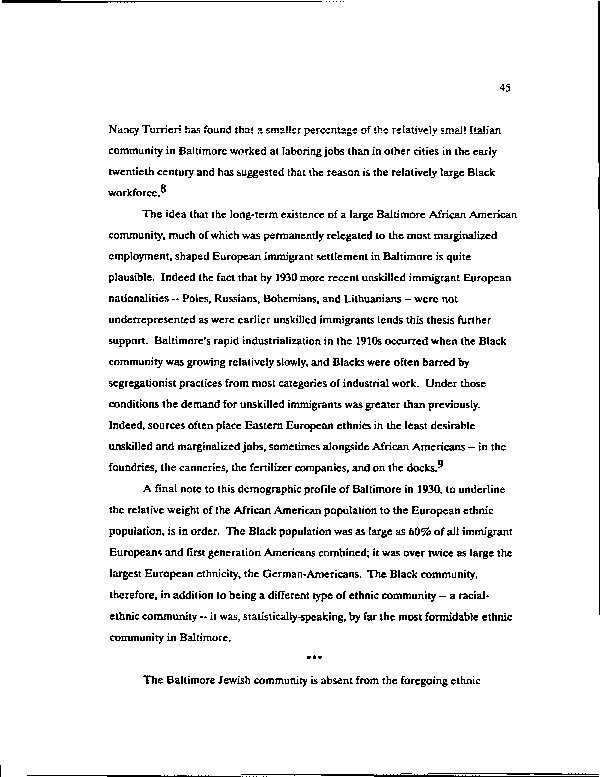|
45
Nancy Torrieri has found that a smaller percentage of the relatively small Italian
community in Baltimore worked at laboring jobs than in other cities in the early
twentieth century and has suggested that the reason is the relatively large Black
workforce.
The idea that the long-term existence of a large Baltimore African American
community, much of which was permanently relegated to the most marginalized
employment, shaped European immigrant settlement in Baltimore is quite
plausible. Indeed the fact that by 1930 more recent unskilled immigrant European
nationalities - Poles, Russians, Bohemians, and Lithuanians - were not
underrepresented as were earlier unskilled immigrants lends this thesis further
support. Baltimore's rapid industrialization in the 1910s occurred when the Black
community was growing relatively slowly, and Blacks were often barred by
segregationist practices from most categories of industrial work. Under those
conditions the demand for unskilled immigrants was greater than previously.
Indeed, sources often place Eastern European ethnics in the least desirable
unskilled and marginalized jobs, sometimes alongside African Americans — in the
foundries, the canneries, the fertilizer companies, and on the docks/*
A final note to this demographic profile of Baltimore in 1930, to underline
the relative weight of the African American population to the European ethnic
population, is in order. The Black population was as large as 60% of all immigrant
Europeans and first generation Americans combined; it was over twice as large the
largest European ethnicity, the German-Americans. The Black community,
therefore, in addition to being a different type of ethnic community — a racial-
ethnic community - it was, statistically-speaking, by far the most formidable ethnic
community in Baltimore.
• ••
The Baltimore Jewish community is absent from the foregoing ethnic
|

